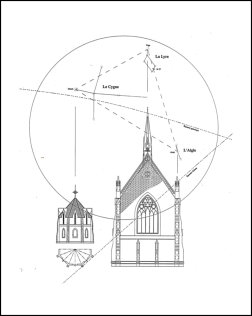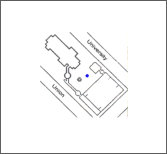Read more ...
These three stars form the Summer Triangle.
Vega is a brilliant blue-white star. Although it is just 2.5 times larger than the Sun, it shines much hotter and brighter. Since Vega is only 26 light-years away, it appears as the fifth brightest star in the sky; and because the Earth's axis of rotation gradually points to different parts of the sky, 12,000 years from now Vega will be the North star.
Deneb, one of the most luminous stars in the sky, is a blue-white supergiant. It measures 116 times the Sun's diameter but shines 80,000 times brighter. If Deneb was centered in our solar system we would never experience the darkness of night. Situated 1,800 light-years from the Earth, Deneb is one of the farthest stars visible to the unaided eye.
Altair is about the same size as the Sun but its blue-white light shines 10 times brighter. Altair spins so quickly that it is thought to be egg-shaped, half as wide as it is high.
The Ring Nebula (M57), located between the two southernmost stars in the parallelogram of Lyra, is an expanding shell of stellar gas. The Ring began growing 20,000 years ago when the star at its center exploded, ejecting part of its atmosphere into space.
Under dark, moonless skies, far from city lights, a faint glowing cloud can be seen running through the center of the Summer Triangle. This band of light, which stretches from horizon to horizon, is the Milky Way. It is the edge-on view of the disk of our galaxy as seen from within. Its faint glow represents billions of stars too far away to resolve as points of light. The rifts that run through the Milky Way are dark clouds of interstellar dust and gas that obscure our view of the distant stars beyond."






